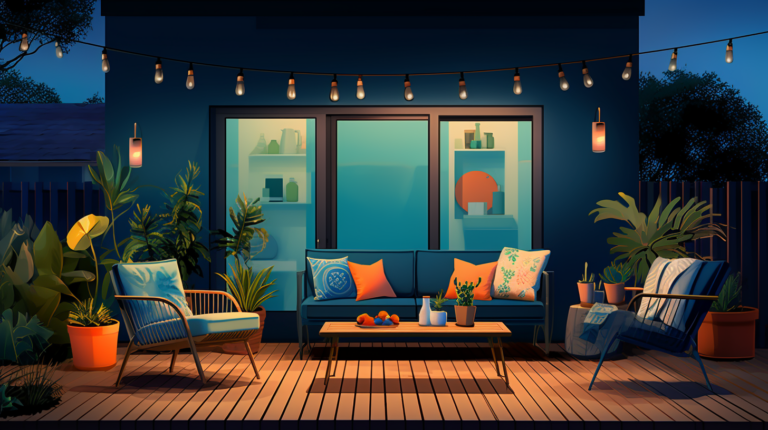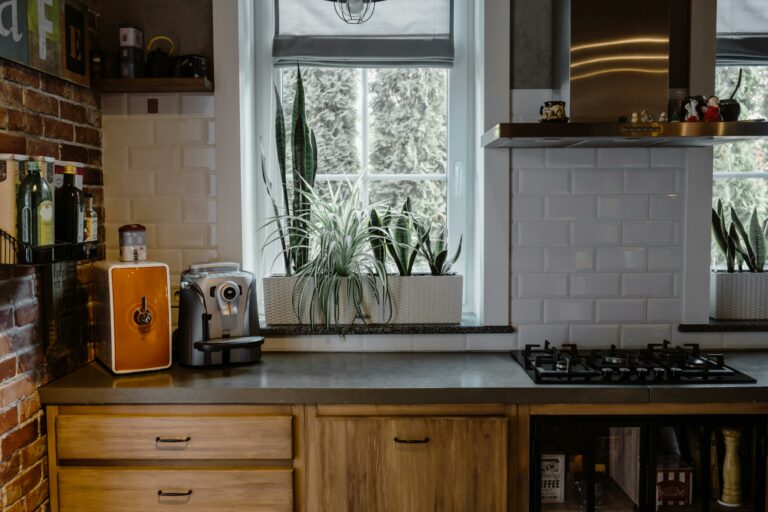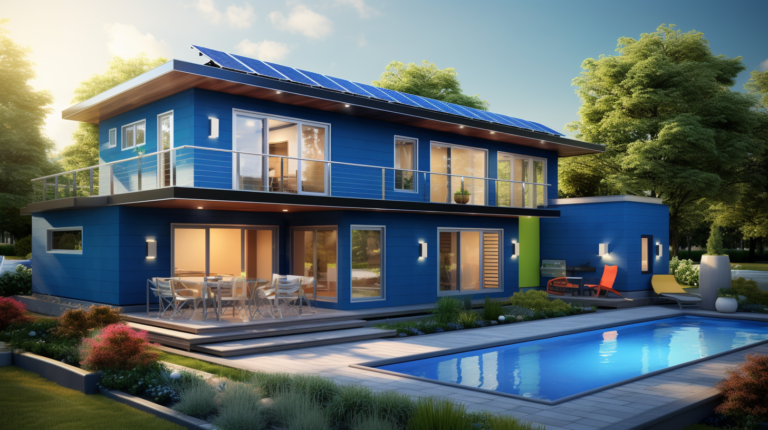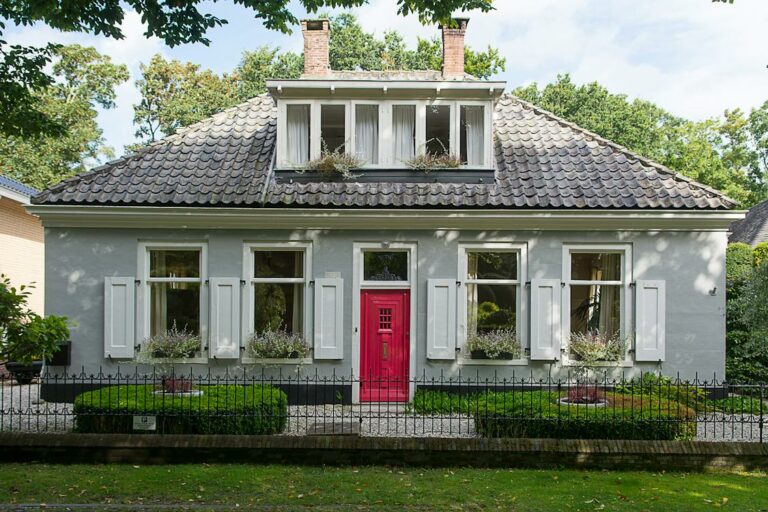The Power of Lighting : Enhancing Your Home’s Design in 2023
Welcome to The Power of Lighting : Enhancing Your Home’s Design! When it comes to creating a beautiful and inviting space, lighting plays a crucial role. Not only does it provide illumination, but it also adds depth, warmth, and character to any room. From creating the perfect ambiance to highlighting architectural features, lighting has the power to transform your home.
In this article, we will explore the importance of home lighting design and how it can influence the mood and productivity in different spaces. We will also delve into the various types of lighting available and how to choose the right light fixtures that complement your home’s style and meet your needs. Additionally, we will discuss the importance of creating a lighting plan and the benefits of incorporating energy-efficient and sustainable lighting solutions.
Light temperature and color are also significant factors to consider when designing a space. We will uncover the secrets behind the Kelvin scale and Color Rendering Index (CRI) and guide you on choosing the right color temperature to set the desired ambiance. Lastly, we will explore outdoor lighting designs and provide maintenance and safety tips to ensure your lighting fixtures are always in top shape.
So, whether you’re looking to create a cozy reading nook, a functional home office, or a stunning outdoor entertaining area, this article will be your go-to guide for understanding the power of home lighting and how it can enhance your home design. Let’s brighten up your space and make it truly shine!
Table of Contents
- 1 Understanding the Importance and the Power of Lighting
- 2 Types of Lighting
- 3 Choosing the Right Light Fixtures
- 4 Creating a Lighting Plan
- 5 Energy Efficiency and Sustainability
- 6 Understanding Light Temperature and Color
- 7 Outdoor Lighting Designs
- 8 Maintenance and Safety Tips
- 9 Conclusion
- 10 Frequently Asked Questions
Understanding the Importance and the Power of Lighting
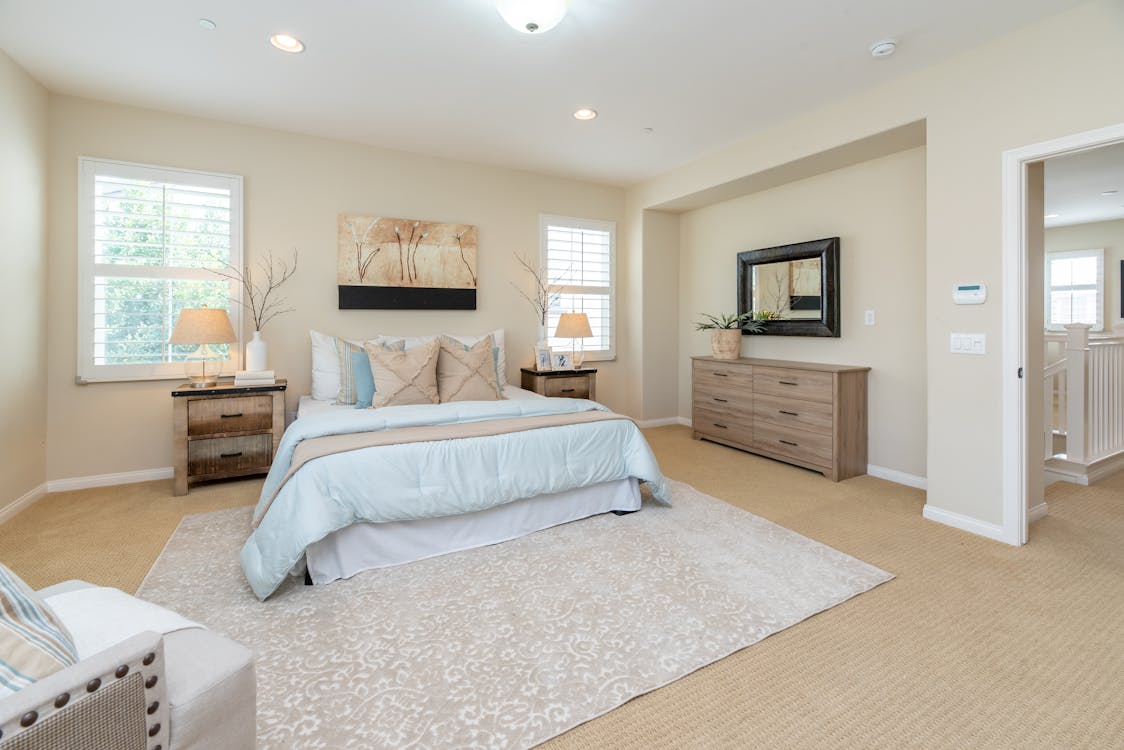
Have you ever walked into a room and instantly felt a sense of calmness or energy? Chances are, home lighting played a big role in creating that ambiance. Lighting is more than just a practical necessity in our homes – it has the power to enhance the design and atmosphere of any space. In this section, we’ll explore the importance of lighting and how it can transform your home.
Impact of Lighting on Ambiance
The right home lighting can make or break the ambiance of a room. It sets the tone and establishes the overall mood. Whether you want a cozy and intimate atmosphere or a bright and lively space, lighting can help you achieve it. By carefully selecting the intensity and color temperature of your light fixtures, you can create the perfect ambiance for any occasion.
Enhancing Architectural Features
Lighting is a fantastic tool for highlighting the architectural features of your home. Think about those beautiful exposed brick walls or the elegant crown molding – with the right home lighting, you can make them the focal point of the room. By strategically placing spotlights and accent lights, you can draw attention to the unique design elements that make your home special.
Influencing Mood and Productivity
Did you know that home lighting can influence your mood and productivity? Bright, cool-toned lighting can help you feel more awake and focused, making it ideal for task-oriented spaces like home offices or study areas. On the other hand, warm, soft home lighting can create a relaxing and calming atmosphere, perfect for bedrooms or living rooms where you want to unwind after a long day.
Home lighting has the power to affect our emotions and energy levels, so it’s important to consider the desired mood and purpose of each room when choosing your light fixtures.
The importance of lighting in home design cannot be overstated. From setting the ambiance and highlighting architectural features to influencing mood and productivity, home lighting plays a crucial role in creating a welcoming and comfortable space. In the next section, we’ll delve into the different types of home lighting you can incorporate into your home to elevate its design.
Types of Lighting
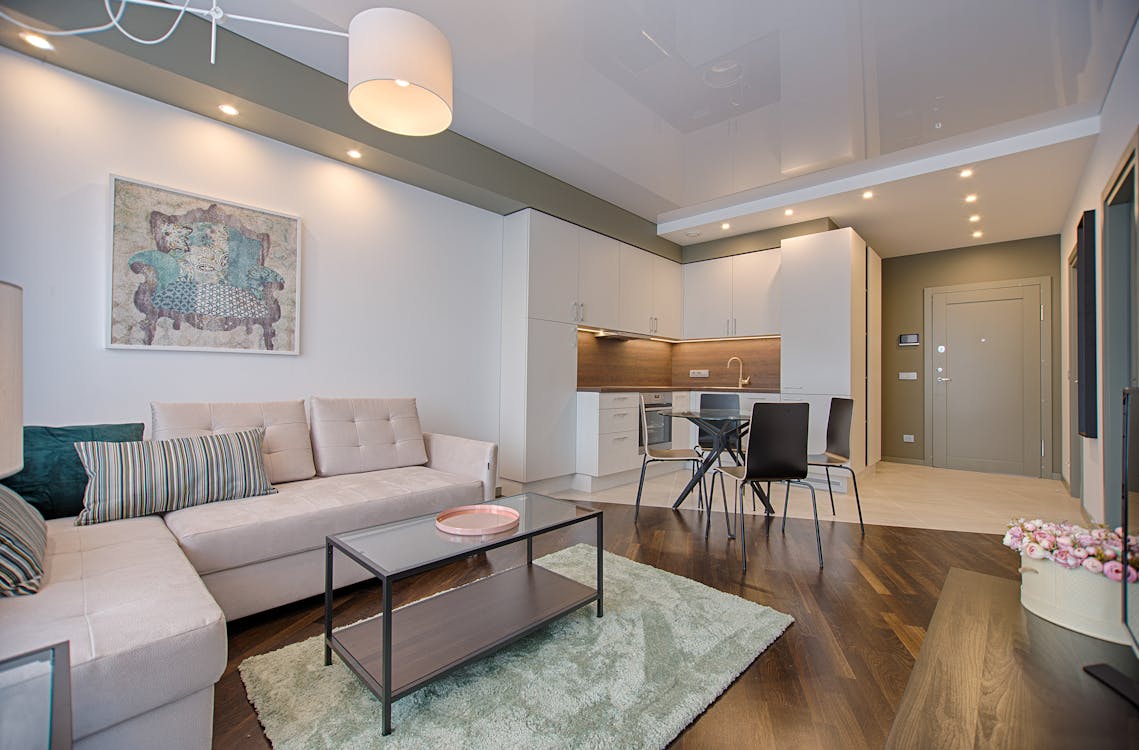
When it comes to home lighting, there are various types that can be used to enhance the design of your home. Each type serves a specific purpose and can create different moods and ambiances. Let’s take a closer look at the different types of lighting:
1. Natural Lighting
Natural lighting refers to the use of natural sunlight to illuminate the interior of your home. It not only brightens up the space but also provides a sense of openness and connection to the outdoors. Natural lighting can be maximized by incorporating large windows, skylights, and glass doors in your home’s design. It is a sustainable and cost-effective way to light up your space during the day.
2. Task Lighting
Task lighting is focused home lighting that provides optimal illumination for specific tasks or activities. It is essential for areas in your home where you need concentrated light for activities such as reading, cooking, or working. Task lighting fixtures include table lamps, desk lamps, under-cabinet lighting, and pendant lights. They should be placed strategically to minimize shadows and glare and to provide adequate home lighting for the task at hand.
3. Ambient Lighting
Ambient lighting, also known as general lighting, is the overall home lighting that provides a comfortable level of brightness to a room. It serves as the primary source of light in a space and helps set the overall mood and ambiance. Ambient lighting is often achieved through ceiling-mounted fixtures such as chandeliers, recessed lights, or track lighting. It should be evenly distributed to provide uniform illumination throughout the room.
4. Accent Lighting
Accent lighting is all about highlighting specific architectural features, artwork, or decorative elements in your home. It adds depth, drama, and visual interest to a space. Accent home lighting fixtures include wall sconces, picture lights, track lights, or spotlights. It should be positioned to direct attention to the focal point and create a sense of dimension.
By understanding the different types of home lighting and their purposes, you can create a well-lit and visually appealing home. It’s important to combine these types of home lighting to achieve the desired effect and create a harmonious balance in your space.
Choosing the Right Light Fixtures
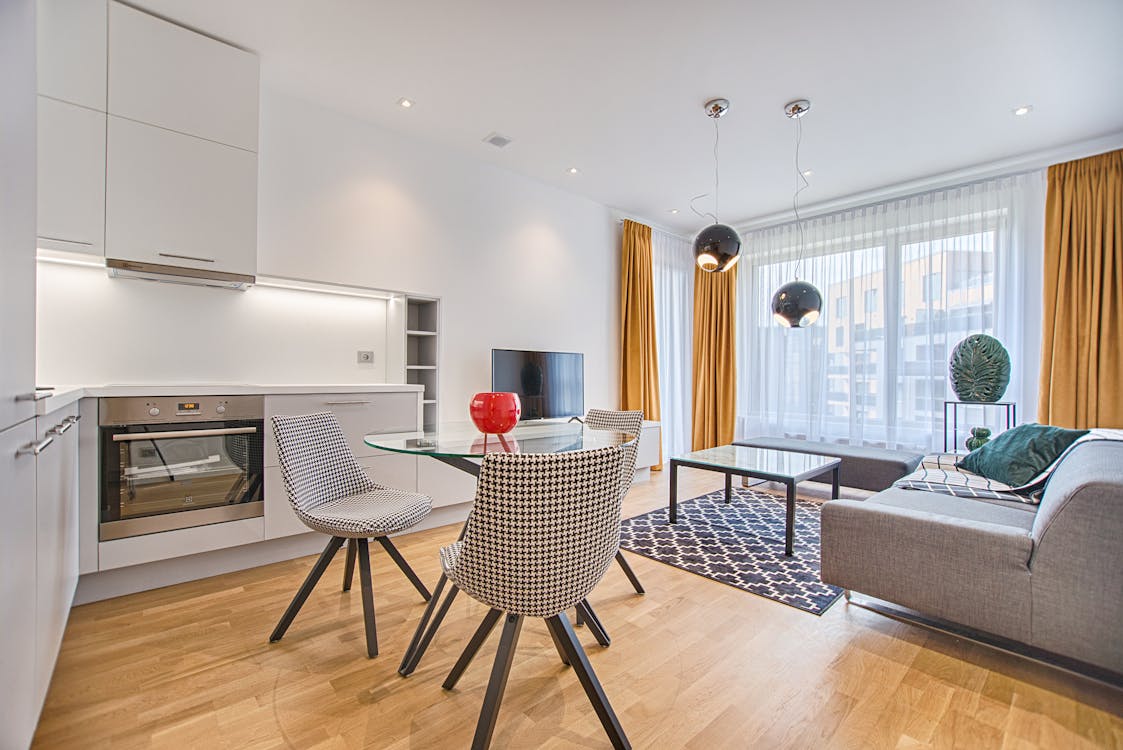
When it comes to choosing the right light fixtures for your home, there are a few important factors to consider. The fixtures you choose can have a significant impact on both the functionality and aesthetics of your space. Here are some tips to help you make the right choice:
Matching Fixtures with Home Style
The style of your home plays a crucial role in determining the types of light fixtures that will work best. Whether your home has a modern, traditional, or eclectic design, you’ll want to select fixtures that complement its overall style. Consider the following:
- Modern Design: Choose sleek and minimalist fixtures with clean lines and a contemporary feel.
- Traditional Design: Opt for fixtures with ornate details, such as chandeliers with decorative elements or sconces with intricate designs.
- Eclectic Design: Mix and match different styles and materials to create an eclectic look that reflects your personal taste.
Considering Size and Scale
The size of your space and the scale of your furniture can also influence your choice of fixtures. You’ll want to find fixtures that are proportionate to the room and not overpowering or too small. Consider the following:
- Large Spaces: If you have a spacious room with high ceilings, choose larger fixtures that can make a statement and fill the room appropriately.
- Small Spaces: In smaller rooms, opt for smaller fixtures that are proportional to the space and don’t overwhelm the room’s design.
Balancing Functionality and Aesthetics
While the aesthetic appeal of light fixtures is important, it’s also important to ensure that they serve their intended purpose. Consider the functionality and practicality of the fixtures you’re considering. Ask yourself the following questions:
- What is the primary purpose of the lighting in this space? Is it meant for general lighting, task lighting, or accent lighting?
- Do I need the fixture to provide a specific type of lighting? For example, if you’re looking for task lighting in a kitchen, you may want to choose fixtures that provide focused and bright light.
Remember to strike a balance between the aesthetics and functionality of your chosen fixtures. You want them to enhance the overall design of your home while also serving their intended purpose.
By carefully considering the style, size, scale, and functionality of light fixtures, you can choose the right ones that will seamlessly blend into your home’s design. Take your time to explore different options, and don’t hesitate to seek the advice of a professional home lighting designer if you need help making the best choice.
Creating a Lighting Plan

When it comes to designing your home lighting, having a well-thought-out plan is essential. A home lighting plan helps you determine the overall look and feel of each room, as well as how the lighting will be used to enhance the space. Here are some steps to help you create a lighting plan that will make a significant impact on your home’s design:
Identifying Room’s Purpose and Activities
The first step in creating a lighting plan is to consider the purpose and activities that will take place in each room. For example, a kitchen may require bright and focused lighting for cooking and food preparation, while a living room may benefit from softer and more ambient lighting for relaxation and entertaining. Make a list of the activities that will take place in each room to determine the type of home lighting needed.
Layering Lighting for Visual Interest
Layering lighting is an effective way to create a visually appealing and functional space. A well-designed lighting plan incorporates three layers of lighting:
- Ambient Lighting: This is the general lighting that provides overall illumination to the room. It can be achieved through the use of ceiling fixtures, chandeliers, or recessed lighting.
- Task Lighting: Task lighting is focused lighting that illuminates specific areas where tasks are performed, such as reading or cooking. Desk lamps, under-cabinet lights, or pendant lights are examples of task lighting.
- Accent Lighting: Accent lighting adds depth and highlights specific objects or architectural features in a room. It can be achieved through the use of spotlights, track lighting, or wall sconces.
By incorporating these three layers of lighting, you can create a versatile and visually interesting home lighting scheme.
Using Lighting to Highlight Artworks or Decor
One of the ways you can elevate your home’s design with lighting is by using it to highlight artworks or decorative elements. Strategic placement of spotlights or track lighting can draw attention to a beautiful painting or sculpture, adding an extra layer of sophistication to the space. Consider the focal points of each room and how lighting can be used to enhance them.
“Lighting creates mood. Lighting sets the tone for every room, immersing you in a warm and cozy ambiance or inspiring productivity and focus. It’s like painting with light.” – Suzanne Kasler
Now that you have an understanding of the importance of a home lighting plan, you can start thinking about the specific fixtures and placement that will work best for each room. But remember, lighting design is subjective, and it’s essential to consider your personal preferences and the unique characteristics of your home. Experiment with different home lighting options, and don’t be afraid to get creative to create a lighting plan that truly enhances your home’s design.
Also read; Outdoor Living Spaces: Ideas for Creating the Perfect Extension of Your Home in 2023
Energy Efficiency and Sustainability

In today’s world, energy efficiency and sustainability are becoming increasingly important considerations in every aspect of our lives. And when it comes to lighting, there are several ways in which you can incorporate these principles into your home’s design. By choosing the right home lighting fixtures and implementing smart lighting systems, you can create a functional and aesthetically pleasing space while minimizing your environmental impact.
LED Lighting and Its Advantages
One of the most energy-efficient options available today is LED lighting. LED stands for Light Emitting Diode, and this technology has revolutionized the home lighting industry. Here are some advantages of using LED lights:
- Energy Savings: LED lights are highly energy-efficient and use up to 80% less energy than traditional incandescent bulbs. This can result in significant savings on your electricity bill.
- Long Lifespan: LED lights have a much longer lifespan compared to traditional bulbs. They can last up to 25 times longer, which means fewer replacements and less waste.
- Instantaneous Lighting: Unlike some other types of lighting, LED lights turn on instantly, without any warm-up time. This makes them ideal for areas where immediate lighting is needed, such as kitchens or bathrooms.
- Dimmable Options: LED lights can be easily dimmed, allowing you to adjust the light intensity to suit your needs and create different moods in your space.
- Eco-Friendly: LED lights are free of toxic materials, such as mercury or lead, making them safer for the environment. Additionally, their energy efficiency helps reduce greenhouse gas emissions.
Smart Lighting Systems for Efficiency
In addition to LED lighting, incorporating smart lighting systems into your home can further enhance energy efficiency. These systems use technology to provide control and flexibility over your home lighting. Here are some features and benefits of smart lighting systems:
- Energy Monitoring: Smart home lighting systems can track and monitor your energy usage, allowing you to make informed decisions about your lighting habits and identify opportunities for improvement.
- Automated Controls: With smart home lighting, you can set timers, schedules, and sensors to automatically turn lights on or off based on occupancy or daylight levels. This ensures that lights are only used when needed, reducing unnecessary energy consumption.
- Remote Access: Many smart home lighting systems can be controlled remotely via smartphone apps. This allows you to adjust your lighting settings even when you’re away from home, giving you added convenience and control.
- Integration with Other Smart Devices: Smart lighting systems can be integrated with other smart devices, such as thermostats or home assistants. This enables seamless automation and coordination between different aspects of your home, further optimizing energy efficiency.
Considerations for Eco-Friendly Designs
When designing an eco-friendly home lighting system, there are a few additional factors to consider. Here are some tips to keep in mind:
- Natural Light Utilization: Maximize the use of natural light by incorporating larger windows, skylights, or light shelves into your home’s design. This not only reduces the need for artificial lighting during the day but also provides numerous health benefits.
- Energy-Efficient Bulbs: Even within LED lighting, there are variations in energy efficiency. Look for bulbs with a higher lumens-to-watt ratio, as this indicates greater efficiency in converting electricity into light.
- Lighting Controls: Implementing home lighting controls, such as motion sensors, dimmers, or occupancy sensors, can help further reduce energy consumption by ensuring lights are only used when necessary.
- Proper Disposal of Bulbs: When a light bulb reaches the end of its lifespan, it’s important to dispose of it properly. Many LED bulbs can be recycled, so check with your local recycling center to ensure they end up in the right place.
By incorporating energy-efficient lighting options and smart home lighting systems into your home’s design, you can create a sustainable and eco-friendly space that not only saves you money but also reduces your environmental impact. So, why not make the switch to LED bulbs and explore the endless possibilities of smart home lighting? Your wallet and the planet will thank you!
Understanding Light Temperature and Color
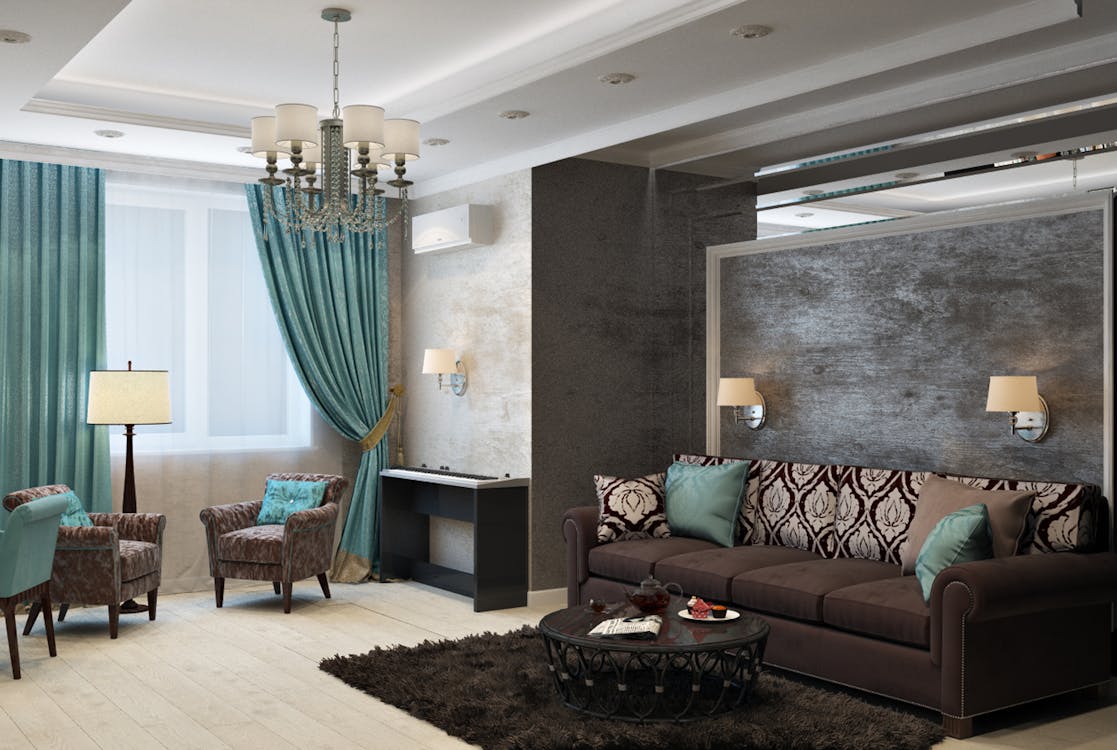
Lighting is not just about brightness and intensity, it is also about the quality and color of light. Understanding light temperature and color is essential for creating the right ambiance in your home. In this section, we will explore the factors that influence light temperature and color, and how they can affect the mood and aesthetics of your living space.
Kelvin Scale and Color Rendering Index (CRI)
When it comes to light temperature, the Kelvin scale is used to measure the color of light emitted by a light source. The scale ranges from warm to cool, with lower Kelvin values indicating warmer light and higher Kelvin values indicating cooler light. Here are some important points to note about light temperature:
- Warm light: Light with a lower Kelvin value (approximately 2700K to 3000K) is considered warm. It emits a soft, yellowish glow, similar to the warm light of a candle or incandescent bulb. Warm light creates a cozy and intimate atmosphere, perfect for relaxing in the evening.
- Cool light: Light with a higher Kelvin value (around 5000K to 6500K) is considered cool. It emits a bright, bluish-white light, resembling daylight. Cool light is energizing and can help increase productivity, making it ideal for task-oriented areas such as home offices or kitchens.
The Color Rendering Index (CRI) is another important factor to consider when it comes to light color. It measures the ability of a light source to accurately render colors compared to natural light. A higher CRI value (usually above 80) means that the colors will appear more vibrant and true to life under that particular light source.
Choosing the Right Color Temperature
Now that you understand the difference between warm and cool light, you might be wondering which color temperature is best for each room in your home. Here are some general guidelines to help you:
- Living room and bedrooms: Warm light (around 2700K to 3000K) creates a cozy and relaxing ambiance. It is perfect for areas where you want to unwind and feel at ease.
- Kitchen and workspace: Cool light (around 5000K to 6500K) is ideal for areas where you need bright and focused illumination. It helps increase alertness and concentration, making it suitable for tasks that require attention to detail.
- Bathroom and makeup area: A combination of warm and cool light (around 3000K to 4000K) is recommended for these spaces. This mix of light temperatures provides a balanced ambiance for grooming and getting ready.
Using Color to Set the Mood
Beyond light temperature, the color of light itself can influence the overall mood and atmosphere of a room. By choosing colored light bulbs or using colored filters, you can create a unique and personalized space. Here are some examples:
- Blue light: Creates a calming and serene environment. It is often used in bedrooms or meditation rooms to promote relaxation and sleep.
- Red light: Evokes warmth and passion. It can be used in dining areas or entertainment spaces to create an intimate and cozy atmosphere.
- Green light: Adds a sense of tranquility and harmony. It is commonly used in home offices or reading nooks to create a soothing and peaceful environment.
Remember, experimenting with different colored lights can be a fun way to enhance the mood and aesthetic of your living spaces. Just make sure to use them sparingly and with consideration, as they can be overpowering if used excessively.
In conclusion, understanding light temperature and color is crucial for creating the right ambiance in your home. By using the Kelvin scale and considering the Color Rendering Index, you can select the appropriate color temperature for each room. Additionally, using colored light allows you to add a personal touch and set the desired mood. So, go ahead and play with different home lighting options to create a space that reflects your style and enhances your overall well-being.
Outdoor Lighting Designs
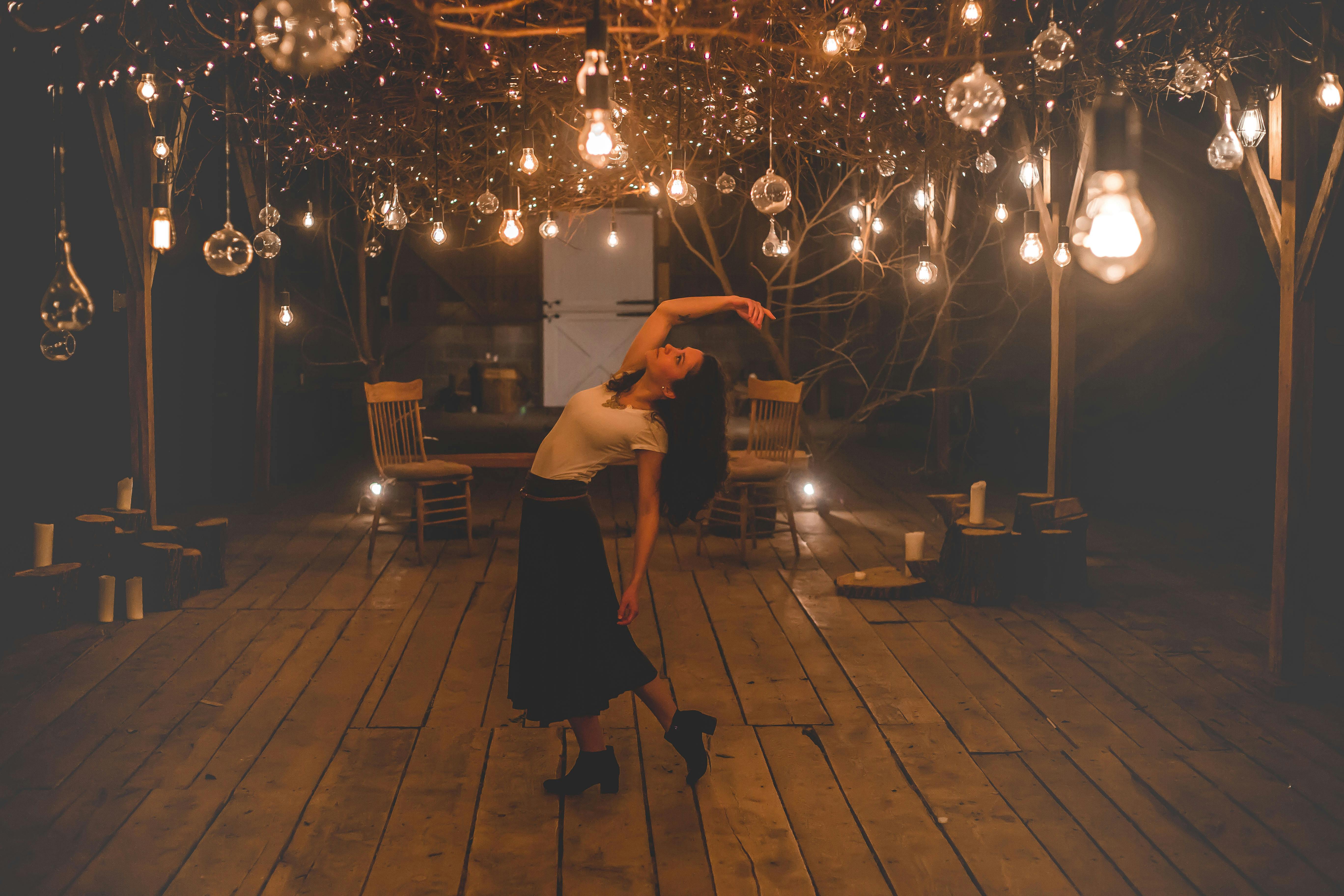
When it comes to enhancing your overall home design, don’t overlook the power of outdoor lighting. Well-placed lights can transform your outdoor spaces, increase curb appeal, and improve safety and security. Whether you have a sprawling garden, a cozy backyard, or a simple front porch, implementing the right outdoor lighting design can make a world of difference. In this section, we’ll explore some outdoor lighting design ideas to help you create a captivating and inviting exterior.
Enhancing Curb Appeal and Safety
Outdoor lighting not only adds beauty to your home’s exterior but also helps improve safety and security. Here are a few ideas to consider when designing your outdoor lighting:
- Pathway Lighting: Illuminate your walkway or driveway with well-placed lights to guide guests safely to your front door. Choose fixtures that complement your home’s architectural style and enhance the overall aesthetic.
- Highlighting Architectural Features: Use spotlights or uplights to highlight the unique architectural features of your home, such as columns, archways, or interesting textures. This can create a dramatic effect and draw attention to the beautiful elements of your home.
- Focal Point Lighting: If you have a stunning landscape feature, such as a fountain, statue, or a mature tree, consider spotlighting it to create a focal point. This draws attention to the area and adds visual interest to your outdoor space.
Garden and Landscape Lighting
Your garden and landscaping deserve to be showcased even after the sun sets. Here are a few ways you can use lighting to enhance your outdoor space:
- Silhouette Lighting: Place lights strategically behind shrubs or trees to create captivating silhouettes against your house or walls. This adds depth and drama to your garden, creating a visually stunning effect.
- Uplighting Trees and Plants: Use uplighting techniques to highlight the beauty of your trees and plants. This is a great way to showcase the textures and colors of your foliage, while also creating a magical ambiance in your outdoor space.
- String Lights: Create a cozy and enchanting atmosphere by adding string lights to your outdoor seating area or pergola. These lights can be draped overhead to create a warm and inviting space for entertaining or relaxation.
Creating Outdoor Living Spaces
If you have a patio or deck, you can transform it into a functional and stylish outdoor living space with the right lighting design. Here are a few ideas:
- Patio String Lights: Hang string lights across your patio or deck to create a soft and romantic atmosphere. This is a popular trend that adds charm and elegance to any outdoor gathering.
- Task Lighting: Install task lighting near cooking and dining areas to ensure functionality and convenience. This can include overhead lights, pendant lights, or even built-in lighting in your outdoor kitchen.
- Fire Feature Lighting: If you have a fire pit or fireplace, consider adding lighting around this area to create a cozy and inviting ambiance. This allows you to enjoy the warmth and beauty of the fire even after the sun goes down.
When designing your outdoor lighting, remember to strike a balance between aesthetics and functionality. Choose fixtures that are not only visually appealing but also durable and weather-resistant. Additionally, be mindful of energy efficiency by opting for LED lights and consider using smart lighting systems for added convenience and control.
With the right outdoor lighting design, you can transform your outdoor spaces into stunning retreats, enhance the architectural features of your home, and create a warm and inviting atmosphere for you and your guests to enjoy. Get creative, experiment with different lighting techniques, and bring your outdoor spaces to life at night!
Maintenance and Safety Tips

When it comes to maintaining and ensuring the safety of your home lighting, there are a few essential tips to keep in mind. By following these simple guidelines, you can prolong the lifespan of your light fixtures and minimize the risk of electrical hazards.
Cleaning and Maintaining Light Fixtures
Regular cleaning and maintenance of your light fixtures can greatly improve their performance and longevity. Here’s what you need to know:
- Turn off the power: Before cleaning or performing any maintenance on your light fixtures, make sure to turn off the power at the circuit breaker to avoid any accidents.
- Remove dust and debris: Use a soft lint-free cloth or a feather duster to gently remove dust and debris from the surface of your light fixtures. Avoid using abrasive materials that could scratch or damage the fixtures.
- Clean glass and shades: Glass shades and light bulbs can accumulate dirt and grime over time. Clean them gently using a mild glass cleaner and a soft cloth. Avoid using harsh chemicals that could damage the glass.
- Check for loose connections: Periodically inspect the wiring connections of your light fixtures to ensure they are secure. Loose connections can cause flickering lights or even electrical hazards.
Proper Use of Extension Cords and Outlets
Using extension cords and outlets correctly is crucial for maintaining the safety of your home lighting system. Here are a few tips to keep in mind:
- Choose the right extension cord: When using extension cords for your lights, make sure to choose cords that are rated for the intended wattage. Using an extension cord with a lower wattage rating can result in overheating and potential fire hazards.
- Avoid overloading outlets: Do not overload your electrical outlets by plugging multiple high-wattage devices into a single outlet. Spread the load across multiple outlets to prevent overheating.
- Inspect cords for damage: Regularly check the extension cords and power cords of your light fixtures for any signs of fraying, cracks, or exposed wiring. Damaged cords should be replaced immediately to avoid the risk of electrical shock or fire.
Preventing Electrical Hazards
Taking precautions to prevent electrical hazards is paramount when it comes to the safety of your home lighting system. Here are some safety measures to consider:
- Install ground fault circuit interrupters (GFCIs): GFCIs are designed to provide additional protection against electrical shocks and are especially important in areas where water is present, such as bathrooms and kitchens.
- Keep lighting away from water sources: Ensure that your light fixtures are installed at a safe distance from water sources such as sinks, showers, and outdoor sprinklers.
- Consult a professional: If you encounter any electrical issues or if you are unsure about any aspect of your lighting system’s safety, it’s best to consult a licensed electrician. They can provide valuable advice and ensure that your lighting is up to code.
By following these maintenance and safety tips, you can enjoy a well-maintained lighting system that not only enhances the design of your home but also keeps you and your family safe. Remember to prioritize safety and consult a professional if needed to address any electrical concerns.
Also read; Designing a Sustainable Home: Tips for Eco-Friendly Homeowners in 2023
Conclusion
In conclusion, lighting plays a crucial role in enhancing your home design and creating a comfortable and inviting atmosphere. By understanding the importance of lighting, choosing the right light fixtures, creating a lighting plan, and considering energy efficiency and sustainability, you can transform your living space into a well-lit and aesthetically pleasing environment.
Remember to pay attention to different types of home lighting, such as natural lighting, task lighting, ambient lighting, and accent lighting, as they each serve different purposes and contribute to the overall ambiance of the room. Additionally, make sure to match the fixtures with your home design, consider size and scale, and strike a balance between functionality and aesthetics.
Layering lighting is essential for visual interest, and it allows you to highlight specific architectural features or artworks in the room. Don’t forget to explore different light temperatures and colors to set the desired mood and complement your overall home design scheme.
When it comes to outdoor lighting, consider how it enhances curb appeal and provides safety. Garden and landscape lighting can add a touch of elegance and create a beautiful ambiance, while outdoor living spaces allow you to extend your enjoyment of your property into the evening hours.
Lastly, keep in mind the importance of maintenance and safety. Regularly clean and maintain your light fixtures, use extension cords and outlets responsibly, and take precautions to prevent electrical hazards.
By implementing these tips and techniques, you can harness the power of lighting to transform your home into a haven that reflects your personal style and enhances your daily living experience.
Don’t forget to visit Arkitecture Today for more inspiration and ideas on architecture, home and interior design, and decoration. Happy designing!
Frequently Asked Questions
- How can lighting enhance the design of my home?
Lighting can enhance the design of your home by creating a certain ambiance, highlighting architectural features, accentuating artwork or decorative elements, and providing functional illumination for various activities.
- What are the different types of lighting fixtures to consider?
There are several types of lighting fixtures to consider, including chandeliers, pendant lights, recessed lighting, track lighting, wall sconces, and table lamps. Each type serves a different purpose and can contribute to the overall design scheme.
- How can I choose the right lighting fixtures for my home?
When choosing lighting fixtures, consider the style and theme of your home, the purpose of the lighting (ambient, task, or accent), the size and scale of the space, and personal preferences. It’s also important to ensure that the fixtures complement other elements in the room.
- What are some popular lighting trends for home design?
Some popular lighting trends for home design include vintage-inspired fixtures, adjustable and smart lighting options, incorporating natural materials such as wood or rattan, and utilizing energy-efficient LED lighting.
- Are there any lighting techniques to enhance specific areas of my home?
Yes, there are various lighting techniques to enhance specific areas of your home. For example, task lighting can be used in kitchens or home offices for focused illumination, while accent lighting can highlight artwork or architectural details. Layering different types of lighting can create depth and add visual interest.


